How many of you remember as a kid attending the home slide shows your parents put on for family, friends, and neighbors? If you’re a baby boomer like us, you’ll likely recall your father pulling the screen out of the front hall closet, extending the legs, and then unrolling the white screen to attach to the hook on the vertical arm. Then he unboxes the slide projector, places it on one of those small fold-up tables, and plugs it in. Next comes the multiple box trays with slides that have been carefully inserted into their slots in an order in which father wants to narrate. (The carousel slide tray was the next generation of new technology.) A test drive had to be performed before the guests arrive. The projector is turned on and carefully calibrated to ensure it is at the proper distance from the screen and in focus.
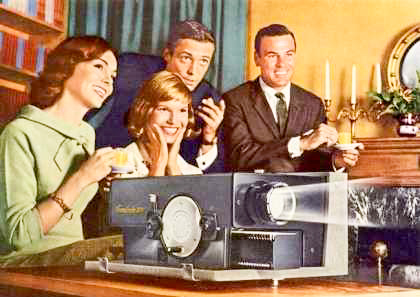
So, the screen show is all set, Mom has made the hors-d’œuvres (we call them appetizers since it’s easier to spell), and Dad has set up the bar. Now all that is needed are the guests. At the appointed hour, everyone arrives. After the chit-chat, Dad calls everyone to the living room. Everybody settles back, begins to knock down their third martini or whiskey sour, and lights up their favorite smoke. (Remember, back then, everyone smoked.) Dad turns on the projector with its familiar fan sound and exhaust fumes that compete with the smoke from the cigarettes and pipes. The first slide goes up on the screen and through the haze of smoke, the title of the evening’s entertainment is displayed:
Stew and Sandy’s Summer Vacation in Paris
So, kids, fill up your bowl with popcorn, settle into your favorite recliner, make sure your glass is full, and get ready for your slide show.
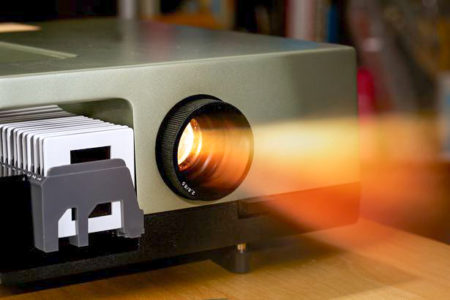
Did You Know?
Did you know that the last living World War II Medal of Honor recipient died on 29 June 2022? Hershel “Woody” Williams (1923−2022) was ninety-eight when he passed away at the VA Medical Center in Huntington, West Virginia. (The hospital was named for him.) Woody joined the Marines in 1943 and became a demolition operator. During the Battle of Iwo Jima, he volunteered to clear an area riddled by Japanese machine gun fire that hindered the advancement of troops.

For four hours, Woody fought the Japanese with demolition devices and flamethrowers. He managed to wipe out one position after another until he had rendered seven pillboxes harmless, and his fellow Marines were able to advance.
Woody was awarded the Medal of Honor by President Truman on 5 October 1945 for “… unyielding determination and extraordinary heroism in the face of ruthless enemy resistance …”
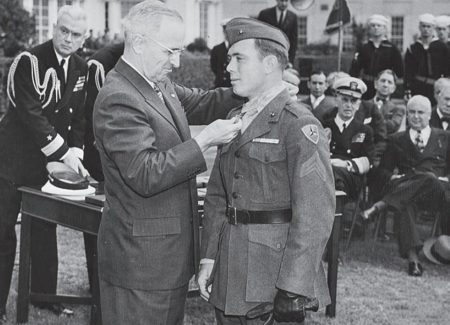
The VFW National Commander Matthew Mihelcic said, “Woody was a symbol of the bravery and selfless sacrifice of those who served in World War II. His legacy not only lives on through his foundation, but with every building, monument, organization, and life (which) his life happened to touch.”
Day One: Arrival in Paris
We arrived mid-day and our room at Les Deux Girafes (11e) wasn’t ready. So, we figured it was cocktail hour somewhere in the world and we headed down Rue Oberkampf in search of a bistro. We found one at the corner of Oberkampf and Blvd de Belleville and settled in for an afternoon of people watching. As we started our second round of beers, police motorcycles and cars came screaming into Place Jean Ferrat (intersection of de Belleville and Oberkampf). Though we couldn’t see them, we heard the shouting and chanting of a large crowd headed toward us on Blvd de Belleville. Suddenly they appeared and quickly turned onto Oberkampf, stopping right in front of us (and a McDonalds). We had a bird’s eye view of our first French demonstration. As quickly as they arrived, they moved on. (We didn’t see anyone sneak into the McDonalds for a quick burger.)
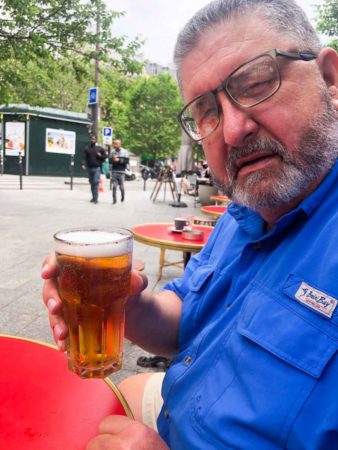
Dinner that evening was at Les Cent Kilos de Paris (www.lescentkilos.fr). The reason I mention this bistro is because the food was so much better than we normally get at a Paris bistro⏤not only for its quality but also for menu diversity.
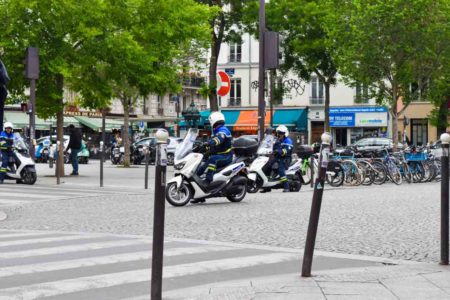
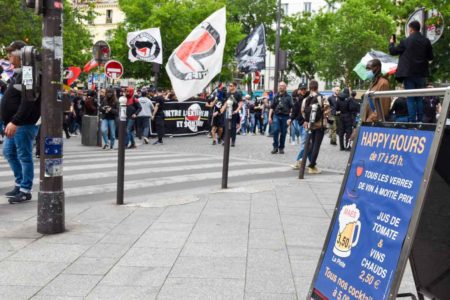
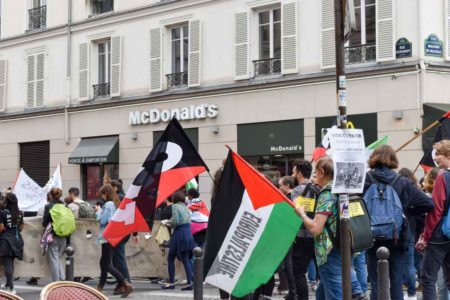
Day Two: Off to Strasbourg and a Former Concentration Camp
We arrived early in the morning at the Gare de l’Est and along with Raphaëlle, we hopped on the train for the two-and-a-half-hour ride to Strasbourg. Once there, we immediately got our rented car and took off to the Vosges, the low mountains where the former KZ Natzweiler-Struthof concentration camp is located. This was the only Nazi concentration camp located on French soil and it operated between May 1941 and September 1944. Natzweiler-Struthof was not constructed as an extermination site, rather it was used as a work/labor camp. In other words, the inmates were expected to die because of hard labor (a granite quarry was located nearby). It was primarily a men’s camp, and the inmates were political prisoners, foreign agents (four female SOE agents were executed here⏤click here to read the blog, Women Agents of the SOE), Nacht und Nebel prisoners (click here to read the blog, Night and Fog), and French résistants (106 réseau Alliance résistants were murdered here⏤click here to read the blog, Noah’s Ark).
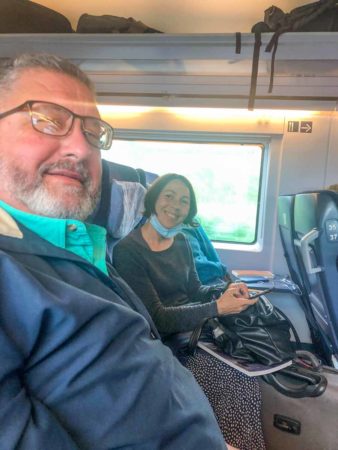
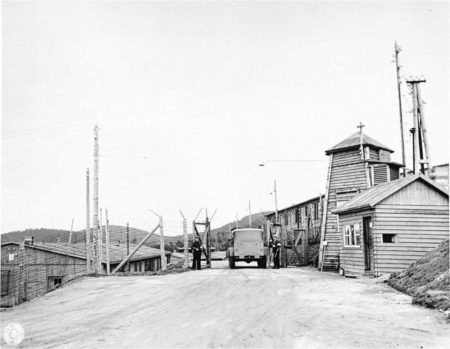
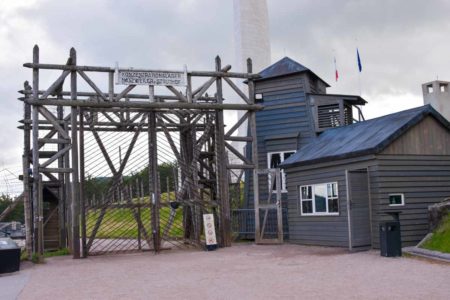
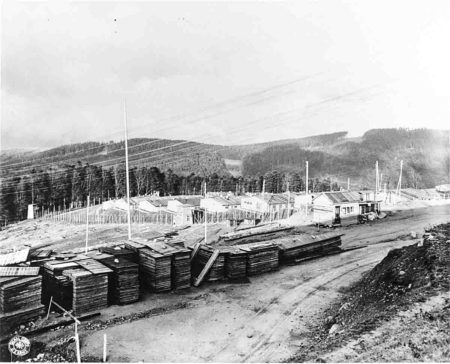
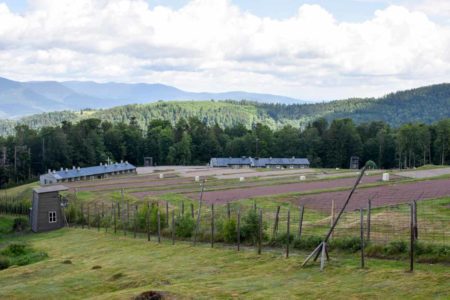
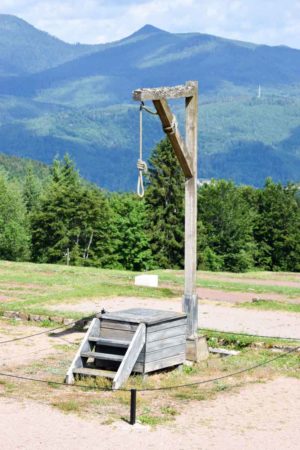
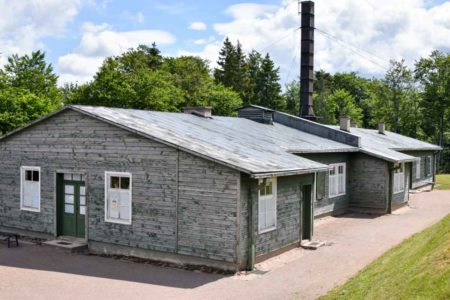
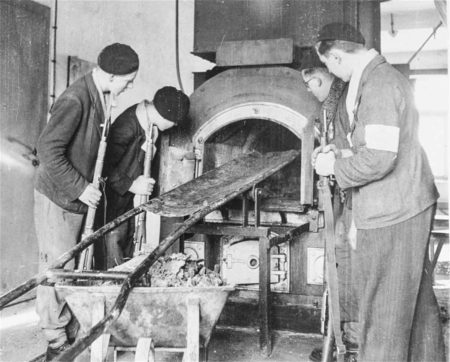
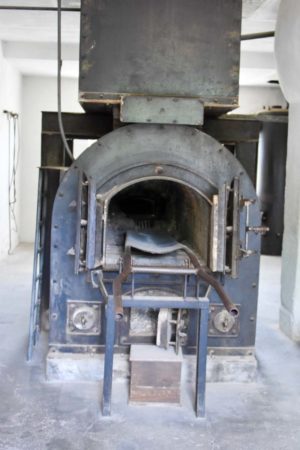

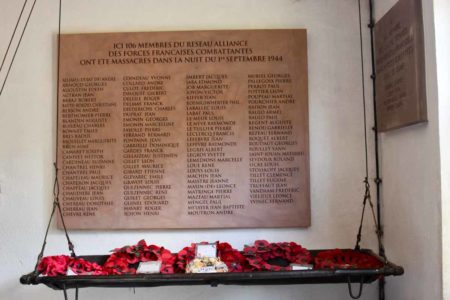
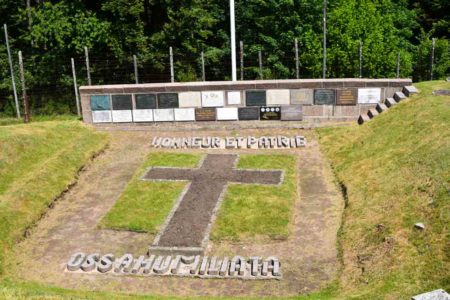
We drove a short distance to off-site location of the gas chamber. A warehouse was converted to the gas chamber and in 1943, it was used to murder 86 prisoners from KZ Auschwitz II-Birkenau. Their skeletons were to be used to create an anthropological display to demonstrate the alleged racial inferiority of the “Jewish race.” This became known as the “Jewish Skeleton Collection.” Across the road was an inn where people sat outside dining while watching the condemned line up to enter the gas chamber.
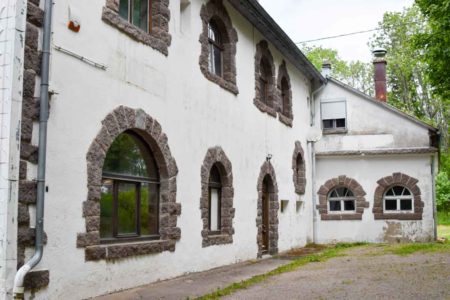
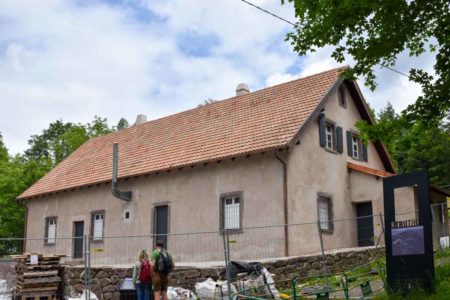
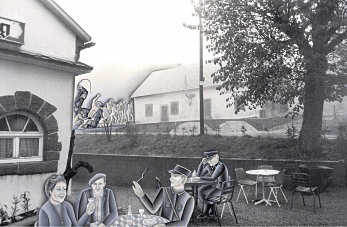
After returning to Strasbourg that afternoon, we drove out to the island situated between Strasbourg and the German city of Kehl. We parked at the Jardin des deux Rives and walked north along the Rhine River (the river separates France and Germany). Our quest was to find the memorial to the members of the réseau Alliance who were murdered, and their bodies thrown into the Rhine behind the memorial monument. Raphaëlle must have questioned a dozen people about its location, but she eventually found the monument near the Pont de l’Europe.
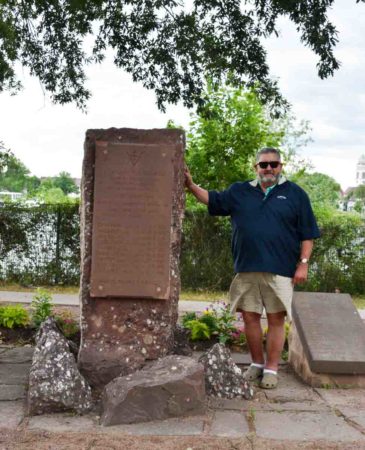
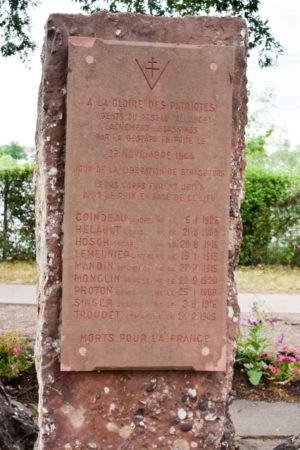
Day Three: Strasbourg and the MM Park Museum
We were scheduled to meet our friend, Dominique Soulier, at the MM Park Museum in La Wantzenau, twenty minutes north of Strasbourg. Dominique’s father, Georges Soulier, was a French agent with the highly secretive Sussex Plan during World War II. I brought along my copy of Dominique’s book, The Sussex Plan: Secret War in Occupied France 1943-1945, for the express purpose of having him autograph it for me (mission accomplished as they say). I also brought him a copy of my new book since I have asked Dominique to write one of the testimonials for the back cover of the second volume. Raphaëlle had her copy of Dominique’s book and obtained his autograph as well. We spent several hours in the museum with Dominique as our personal tour guide. To be honest, we did not expect to see the quality or magnitude of exhibits and vast collection of World War II memorabilia displayed at MM Park. The museum is the result of the monumental efforts of Eric Kauffmann, a successful Strasbourg entrepreneur. Dominique assists M. Kauffmann with the museum’s operation as well as being responsible for the museum’s special exhibit dedicated to the Sussex Plan.
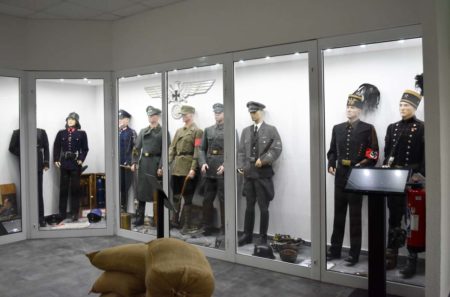
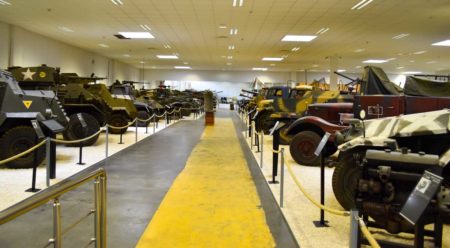
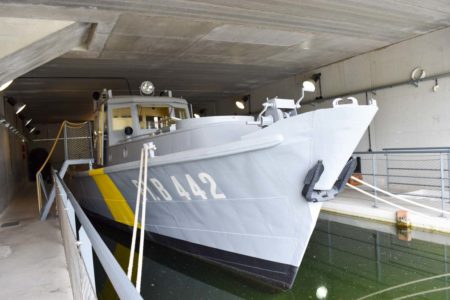
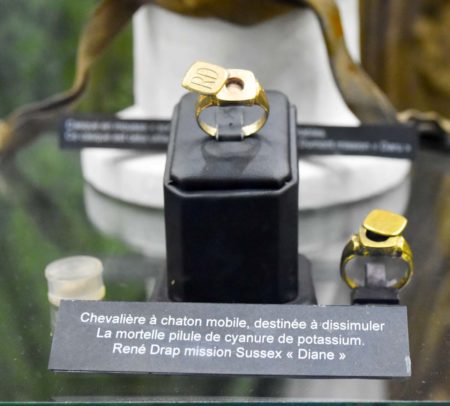
Click here to learn more about the Sussex plan in the blog The Sussex Plan and a Very Brave Woman.
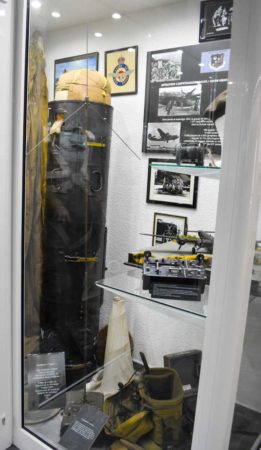
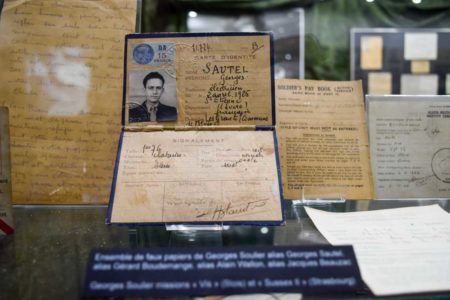
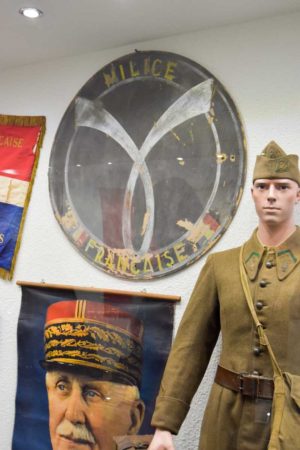
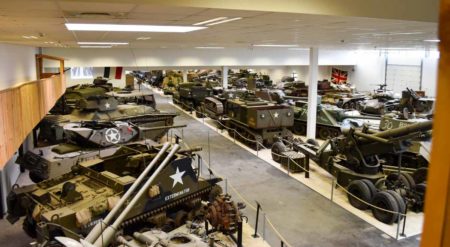
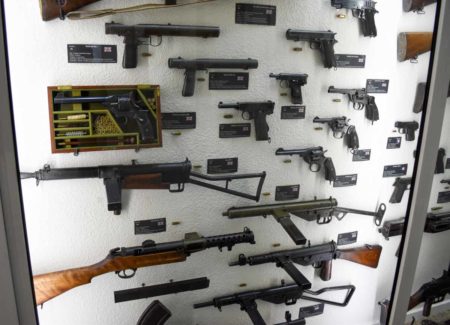
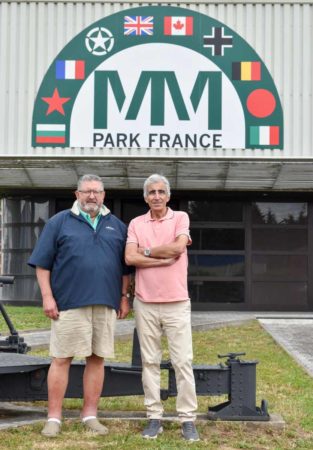
After the museum, it was time to head back to Strasbourg to turn in the car, have some lunch, and hang out at the rail station waiting for our train back to Paris. Raphaëlle found some photographs taken in the Strasbourg station during the early years of the occupation and we had fun trying to get contemporary photographs to match those from eighty years ago.
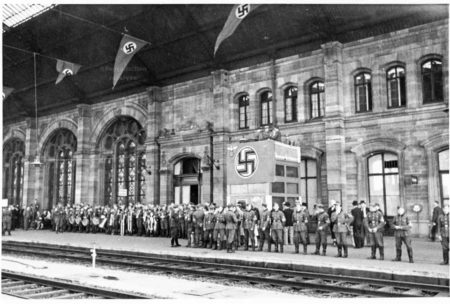
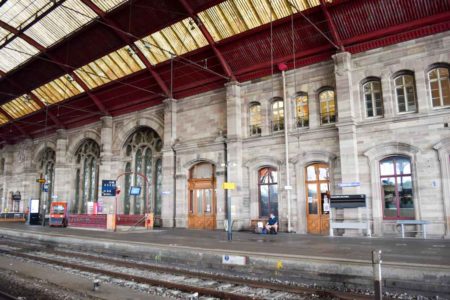
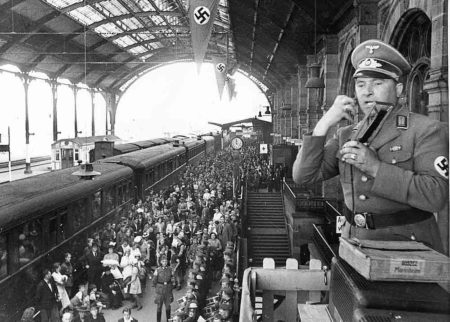
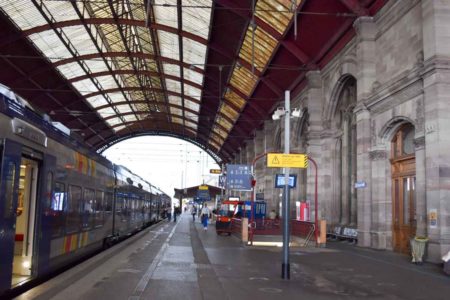
Day Four: Paris and a Free Day
Today, Sandy and I ventured out into the city to see the Paris Underground Sewer Museum. I guess this is a site one goes to after they have seen just about everything in Paris. We were curious because of our knowledge about Baron Haussmann’s work in the mid-1800s improving the city’s sewer system. It was a rainy morning so at least getting out of the rain was worth the trip. Unfortunately, the forty-five minutes we spent underground didn’t really meet our expectations. After the sewage “tour,” off we went to the Tracadéro where we visited the Cité l’architecture et du patrimoine, or the National Architecture Museum. This is a museum of architecture and monumental sculpture. It’s very unique and well worth a visit. (Thank you Jeanne for turning us on to this museum.) Since we were near the Cimetière de Passy, or Passy Cemetery, we thought we’d stop and visit since this cemetery (along with others) will be featured in our future book, Where Did They Bury Jim Morrison, the Lizard King? (Click here).
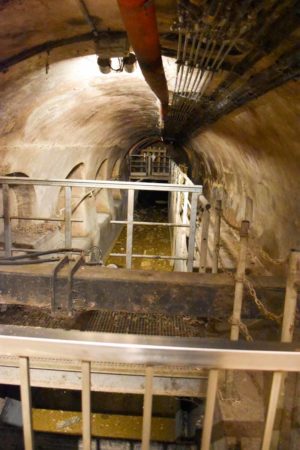
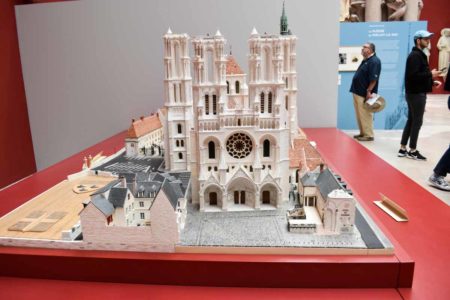
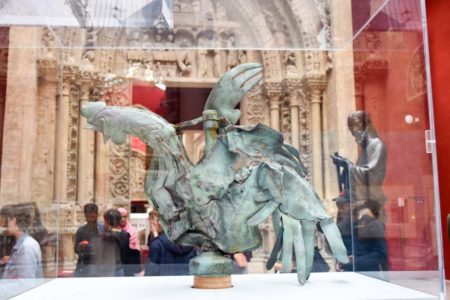
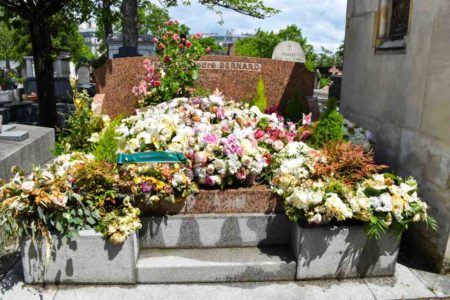
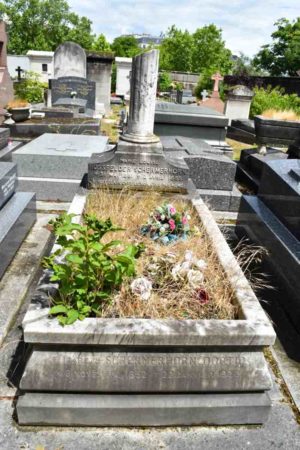
Day Five: Paris and Back With Raphaëlle
Today, we rejoined Raphaëlle for a full day of visiting sites including one to be featured in our next book as well as several stops that we thought would be interesting to see. First up was our visit to Le Musée de la Libération de Paris, or The Liberation Museum of Paris. Located in the building across the street from the Paris Catacombs, it is the consolidation and relocation of two existing museums (Musée du général Leclerc and the Musée Jean Moulin) and the recently restored bunker system used by the French Resistance in August 1944. The exhibits were very well presented, and we enjoyed our descent (100 steps) into the bunker used by Col. Rol-Tanguy during one of the two weeks of uprising in August culminating with the liberation of Paris.
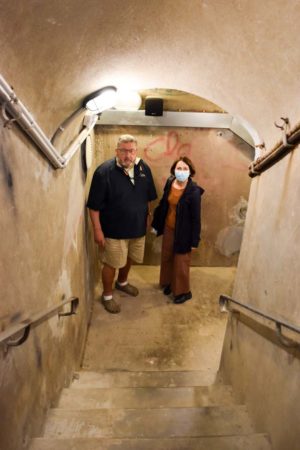
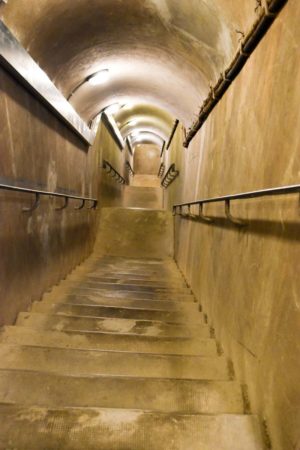
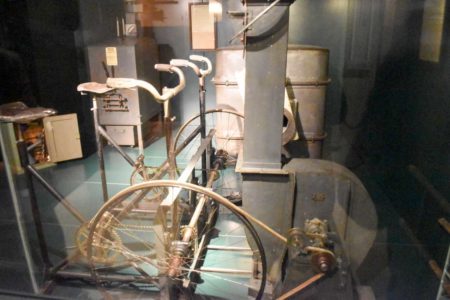
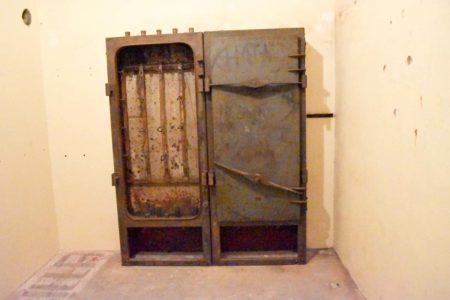
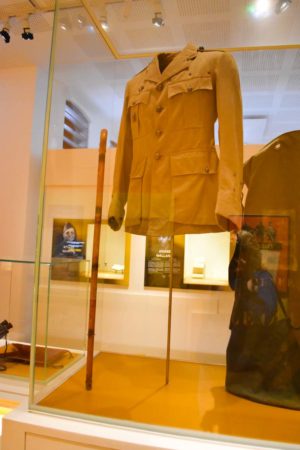
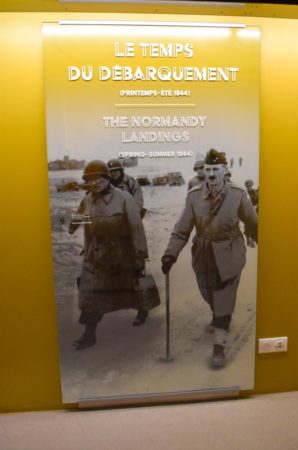
Next up was the Musée de la Préfecture de police, or the Paris Police Museum. What a gem of a little museum⏤something most tourists never experience. It is located on an upper floor of a working police station in the fifth district. (You must be personally escorted.) We were curious to visit because some of the exhibits contained artifacts from serial killers we have highlighted in previous blogs (click here to read the blog, Dr. Jekyll and Mr. Hyde, click here to read the blog, The Parisian Bluebeard is Guillotined).
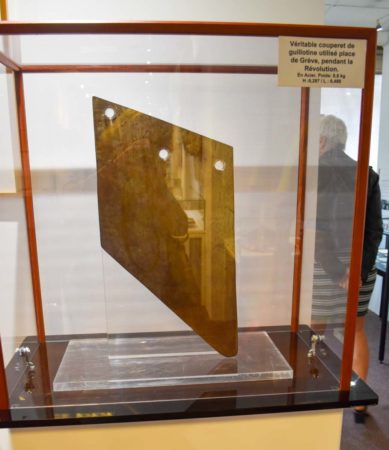
Click here to see the books Where Did They Put the Guillotine?
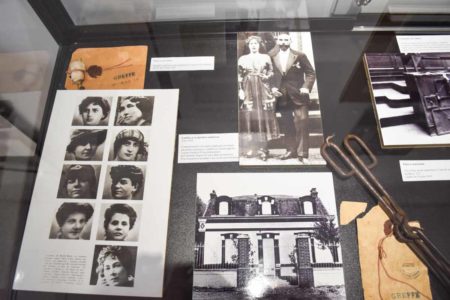
Click here to read the blog, The Parisian Bluebeard is Guillotined.
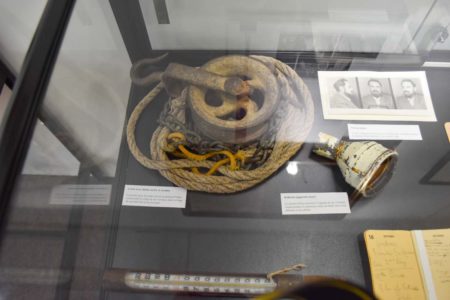
Click here to read the blog, Dr. Jekyll and Mr. Hyde.
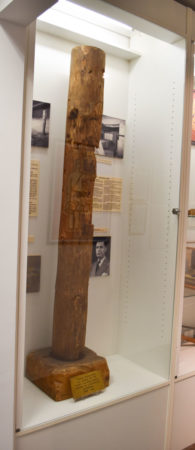
Our final excursion was to the former rail station at Bobigny. Although no longer used, Bobigny station’s rather infamous history during the Occupation cannot be understated. During the summer of 1943, SS-Obersturmbannführer Adolf Eichmann (1906−1962) sent his right-hand man, SS-Hauptsturmführer Aloïs Brunner (1912−2001) to Paris to speed up the deportations of Jews to Auschwitz II-Birkenau. One of the first changes Brunner made was to use Bobigny as the station where the convoy trains would be loaded with its human cargo and dispatched to the extermination camp. He picked Bobigny because of its proximity to Drancy, the transit camp, and the fact the buses could unload next to the track. Bobigny was also chosen because there would be fewer people watching the cattle cars being loaded. Between July 1943 and August 1944, almost twenty-three thousand men, women, and children were deported from this rail station. Most never survived. Today, the station is undergoing reconstruction and a memorial is planned to remember the deportees.
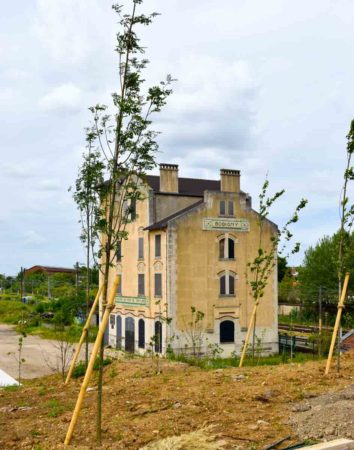
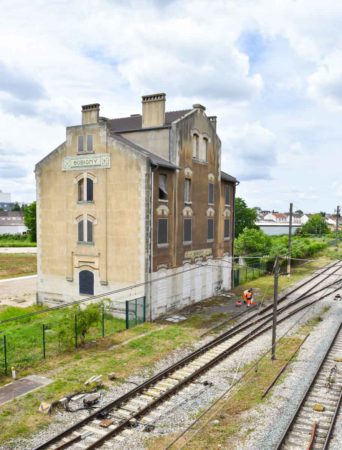
Later that evening, Sandy and I met Raphaëlle, Laurent, and their little girl, Alice, at Les Rupins (10e) for a delightful dinner and reunion.
Day Six: Paris and the Royal British Legion
Day six was an open day for us at least until that evening when we were scheduled to meet our friend, Richard Neave, at the headquarters of the Royal British Legion, Paris Branch (RBL). Richard is the president of the RBL and precisely at seven, he met us at the entrance, and we were escorted to the comfortable rooms of the RBL. Raphaëlle was with us and the three of us were first introduced to Robin Sweeney who is writing a walking tour book of World War I battlefields in northern France. Joining the group were Willie Beauclerk and Patrick Gautier-Lynham, board members of Libre Résistance, an organization dedicated to maintaining the memory and contributions of the brave men and women of Special Operations Executive F-Section. The Royal British Legion’s mission is to assist British veterans who are in financial distress. This is funded through the RBL’s annual “Poppy Appeal.” After cocktails, all of us went to dinner at a nearby bistro and the stories continued. Thank you to Willie for his kind invitation for Sandy and I to join the 6 May ceremony next year at Valençay.
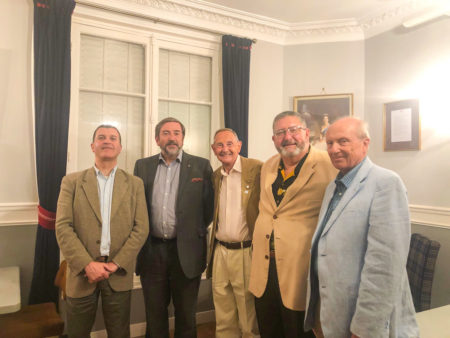

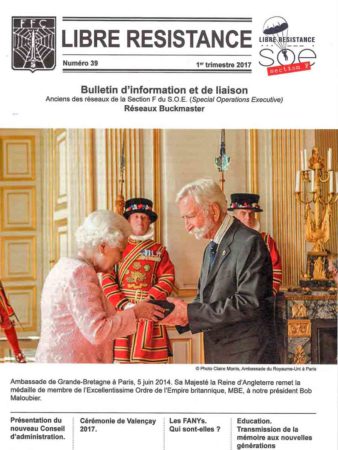
We started the day by visiting my favorite museum in Paris, the Musée Carnavalet. It is the official museum of the city of Paris. After closing in October 2016 for extensive renovations, the museum reopened in March 2021. For those of you who have visited the “old” museum, you will be amazed at the changes. It is a “new” museum, and your expectations will be exceeded.
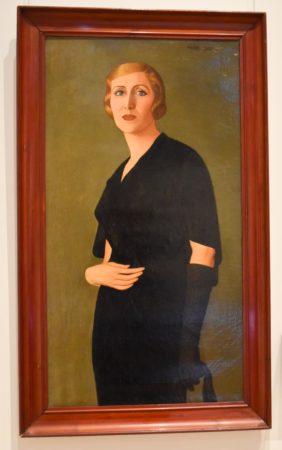
Click here to read more about Suzy in the blog A Painted Lady.
Day Seven: Last Day in Paris
We decided to spend our last day at the Cimetière du Montparnasse, or Montparnasse Cemetery. We brought along a list of occupants we hope to introduce you to in the future book, Where Did They Bury Jim Morrison, the Lizard King? (Click here). Let me tell you, after three or four hours of trying to track down a bunch of people, I was tired. Climbing over and around graves is very exhausting and I think next time, we’ll bring Raphaëlle to help us.
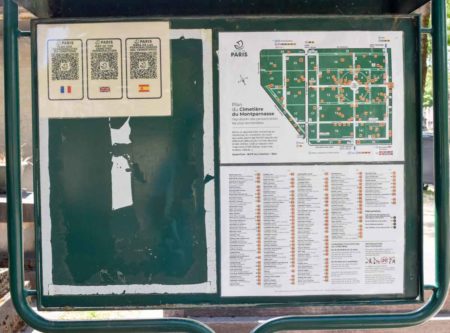
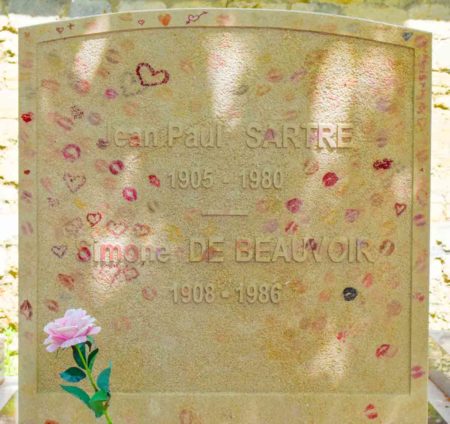
Some Observations and Comments
Here are some of our recent observations compared to our previous trips to Paris over the past fifteen years:
- The streets and sidewalks seem to be cleaner.
- Panhandling is a problem. They come up to you outside while you’re eating or enjoying a drink.
- Bicycles have proliferated now that there are dedicated bike lanes. (Remember, matter is neither created nor destroyed⏤more bike lanes, less automobile lanes.) Electric scooters seem to outnumber the bikes. As a pedestrian and trying to not get hit, it starts to feel like Amsterdam. Parking for tour buses seems to be an issue.
- Much more graffiti appears on the walls of apartment buildings. (Baron Haussmann would be appalled.)
- Almost no one wears a mask.
- Homeless on the streets in the historic district⏤never saw that before.
- Seems as though less people are smoking cigarettes; however, vaping has increased.
- More people (men and women) are wearing shorts and flip-flops. Ten years ago, that was a sight you’d never witness (except for us Americans).
- Fewer Parisian women were “fashionably” dressed. You know, they throw on a bunch of mis-matched clothing articles and end up looking like a million bucks! (This comment was approved by my wife.)
- Asian restaurants have exploded! Additionally, the bistros we frequented had Asian food items on the menu alongside the traditional French bistro food. Are the French getting tired of their cuisine? I thought that was what the pizza joints were for?
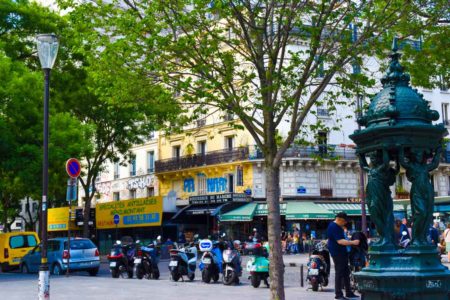
Graffiti on the walls of buildings. It seems as though graffiti on inter-city buildings has proliferated. Notice the Wallace Fountain on the right. Photo by Sandy Ross (5 June 2022). Click here to read the blog Wallace Fountains.
Intermission: To Be Continued
I decided to split our slide show into two blogs. (Actually, Sandy decided to split it.) Today’s blog takes care of our visit to Paris and Strasbourg. After our next blog on 30 July, we will tackle the portion of our trip to the United Kingdom (London, Bletchley Park, and Glasgow). That blog will be published on 13 August.
At that time, I will also provide you with the names of the hotels and restaurants we visited during our stay in Europe and give you our opinion of each. Hopefully, that will be helpful for you on your next visit to Paris, Strasbourg, London, or Glasgow.
Next Blog: Blonde Poison – 30 July
★ Learn More About Home Slide Shows ★
Click here to watch a modern day Home Slide Show. (I picked this clip because of the banjo music).
Soulier, Dominique. The Sussex Plan: Secret War in Occupied France 1943-1945. Paris: Histoire & Collections, 2013.
Williams, Brian (Foreword). Medal of Honor: Portraits of Valor Beyond the Call of Duty. New York: Artisan, 2003.
Strasbourg Rail Station historical photos: Click here.
Disclaimer:
There may be a chance that after we publish this particular blog, the video links associated with the blog are no longer accessible. We have no control over this. Many times, whoever posts the video has done so without the consent of the video’s owner. In some cases, it is likely that the content is deemed unsuitable by YouTube. We apologize if you have tried to access the link and you don’t get the expected results. Same goes for internet links.
What’s New With Sandy and Stew?
Sandy and I have been back from Europe for four weeks now. I’m just finishing wrapping up the paperwork associated with the trip, following through on promises I made to our friends, and planning our next visit to Paris. Sandy has finished cataloging the pictures. In the meantime, we had some of the grandchildren here for a week of swimming in the pool.
With our recent visits to the former Natzweiler-Struthof concentration camp and the Bobigny rail station, I have everything I need to finish the second volume of Where Did They Put the Gestapo Headquarters? Now all I must do is find the time. We have one more trip planned (in two weeks) and after that, I can focus my attention back to the book manuscript. We hope to publish the new book in 2023. By the way, thank you to everyone who purchased the first volume over the past six months. Your kind comments have been greatly appreciated and that is part of what keeps me writing these books.
Thank you to all of you who subscribe to our bi-weekly blogs. It seems there isn’t a day that goes by where we don’t increase our readership. Please let your history buff friends and family members know about our blog site and blogs.
Someone Is Commenting On our Blogs
I’d like to thank all our friends in Europe who took time out of their busy schedules to meet with Sandy and myself. In particular, Roland took off a day to drive us around Glasgow and give us a native son’s view of the city and its history. Dominique was kind enough to pull himself away from the grandchildren and give us a wonderful tour of the MM Park military museum. Sandy and I are looking forward to seeing Richard and his friends at the Royal British Legion and Libre Résistance on our next trip. Finally, it is always fun to see Raphaëlle, Laurent, and Alice. One thing we learned after spending a lot of time in Montparnasse Cemetery hunting down some peculiar occupants is that when we really get serious about researching the cemetery book (Where Did They Bury Jim Morrison, the Lizard King?), we are definitely taking Raphaëlle with us. I suspect she knows where everyone and their secrets are buried.
If there is a topic you’d like to see a blog written about, please don’t hesitate to contact me. I love hearing from you so keep those comments coming.
Share This:
Follow Stew:
Find Stew’s books on Amazon and Apple Books.
Please note that we do not and will not take compensation from individuals or companies mentioned or promoted in the blogs.
 Walks Through History
Walks Through History
Copyright © 2022 Stew Ross


You looked to have a great time Stew .
Hi David. Good to hear from you. Yes, we had a wonderful time. Glad we were able to mail you your book from London. There was post service right down the road from our hotel. Talk soon. STEW
I spotted a small spelling mistake in your Day Two paragraph:
Vosges is spelled with two s’s.
The post was quite informative, as usual.
Cemeteries in Paris offer a fascinating slice of French history for those interested in learning more about different facets of France’s past.
Hi Stephen; Thank you for pointing out the misspelling. We have changed it in the blog. We are looking forward to writing the book about the Paris cemeteries. I think we’ve come up with a unique approach to which occupants to highlight in the book. Although we have three books planned ahead of it, I’ve decided to being the serious research next September… another reason to go back to Paris! Thanks again. STEW
Stew:
When you write your book on the Paris cemeteries I am sure you will include a bit about how the Paris government allocates grave spaces. It is a mystery for us since my sister-in-law, who was a poor divorced pensioner, a real “nobody” except for her family, was assigned a gravesite in the Monparnasse cemetery right next to (directly across the small walking path from) the Sartre/de Beauvoir grave that you have pictured above. When we visit, we are always amazed by this.
Love your work.
Hi Carl; Thank you for your kind words regarding our blogs and books. Let me know your sister-in-law’s name so that we can visit her grave next time we are in the cemetery. Yes, we will incorporate a section in the book about how the graves are allocated and who can qualify for a spot. The rules and regulations create many interesting stories. Thanks for being a subscriber! STEW